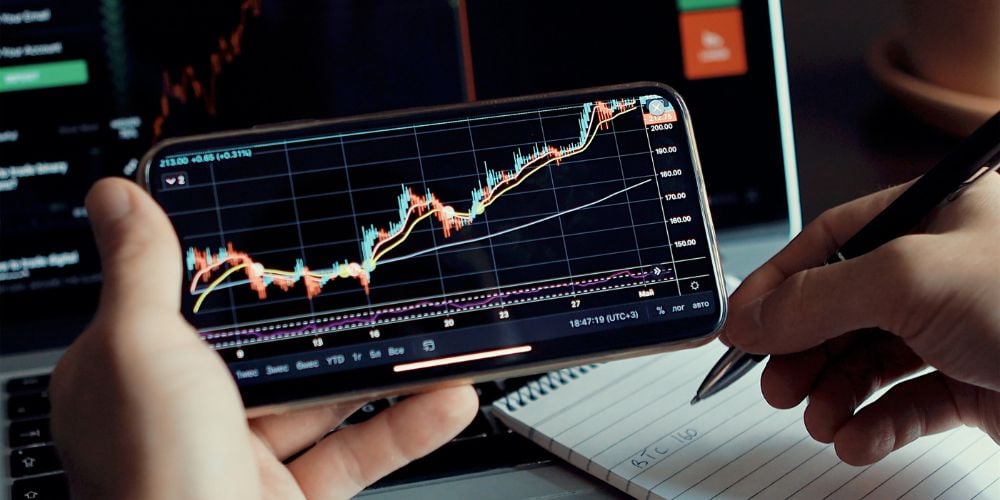In the bustling world of stock trading, the term “gamma squeeze” flickers across the screens of traders and investors, drawing intrigue and caution in equal measure. A phenomenon deeply rooted in the fine mechanics of options trading, a gamma squeeze can orchestrate dramatic shifts in stock prices, captivating the market’s attention.
Its impact, as seen in recent high-profile market events, underscores its relevance and power in today’s trading environment.
What Is a Gamma Squeeze in Stocks?
A gamma squeeze begins in the complex world of options trading. Here, call options play a starring role.
These financial instruments grant buyers the right, though not the obligation, to purchase a stock at a predetermined price before a specified date.
The sensitivity of an option’s delta, referred to as gamma, measures how much the delta changes for a $1 move in the underlying stock price. It’s this gamma that gives the squeeze its name and its momentum.

The Mechanics of a Gamma Squeeze
Central to this process are the market makers, entities tasked with maintaining the liquidity of options in the trading ecosystem.
As traders buy large volumes of call options, market makers, to hedge their own risk, must buy shares of the underlying stock. This activity can push the stock’s price higher.
The momentum builds as the stock’s rising price leads to an increase in the delta of the call options, compelling market makers to purchase even more shares to stay hedged.
This cycle creates a feedback loop, the heart of a gamma squeeze, driving the stock’s price upward at an accelerated pace.
Recognizing a Gamma Squeeze
Identifying a pending gamma squeeze involves vigilance for signs like abnormal volumes of call options being bought or stocks whose prices start to rise rapidly without fundamental reasons.
While past cases offer a guiding light, each gamma squeeze has its unique fingerprints, shaped by market sentiment, the stock’s behavior, and trading dynamics.
The Impact of a Gamma Squeeze
The immediate consequence of a gamma squeeze is the explosive growth in stock prices, often disconnected from traditional valuation methods.
Investors find themselves riding a volatile wave, with prices driven more by the mechanics of the squeeze than by underlying business performance.
The impact on investors varies. Retail investors may see it as an opportunity for quick gains, while institutional investors, more aware of the squeeze’s temporary nature, may proceed with caution.
The dichotomy in perspectives emphasizes the importance of strategy and awareness in navigating these waters.
For individual investors, the allure of quick profits from a gamma squeeze is undeniable. However, the importance of understanding the risks cannot be overstated.
The volatility driven by a gamma squeeze often doesn’t last long, and prices can retreat as swiftly as they rose.
Ensuring a strategy includes measures for risk management, such as setting stop-loss orders or only investing with money one can afford to lose, is prudent.
Recognizing the potential and pitfalls of a gamma squeeze requires a keen eye for market dynamics and an understanding of options trading mechanics. The temporary nature of the price increase underlines the speculative risk inherent in participating in a gamma squeeze.

Frequently Asked Questions
What differentiates a gamma squeeze from a short squeeze?
While both result in rapid stock price increases, a gamma squeeze is rooted in options trading dynamics, particularly involving call options and market maker hedging strategies. A short squeeze, on the other hand, occurs when short sellers are forced to buy back shares to cover their positions, driving up the stock price.
How long do gamma squeezes typically last?
Gamma squeezes are typically short-lived, often resolving in days or weeks as market dynamics change and the immediate effects of the options trades wear off.
Can a gamma squeeze be predicted?
Predicting a gamma squeeze involves recognizing significant volumes of call options and other indicators of potential market maker activity. While possible, it requires vigilant monitoring of trading patterns and market conditions.
What are the risks involved in investing in a stock experiencing a gamma squeeze?
Investing during a gamma squeeze involves high volatility and speculative risk. Stock prices can retreat as quickly as they rose, potentially leading to significant losses for investors caught in the downturn.
Conclusion
The gamma squeeze represents a fascinating intersection of options trading and stock market dynamics.
Its ability to rapidly influence stock prices serves as a reminder of the market’s complexity and the forces that can drive temporary but significant shifts.
For investors considering navigating these volatile waters, education and caution are paramount. A thorough understanding of market mechanisms and measured, informed decision-making offer the best defense against the unpredictable nature of gamma squeezes.
Navigating the precincts of gamma squeezes demands both astuteness and restraint from investors.
By fostering a thorough comprehension of its mechanics and maintaining a vigilant eye on market dynamics, one can engage with this phenomenon from a position of informed caution.


 Tags:
Tags:










